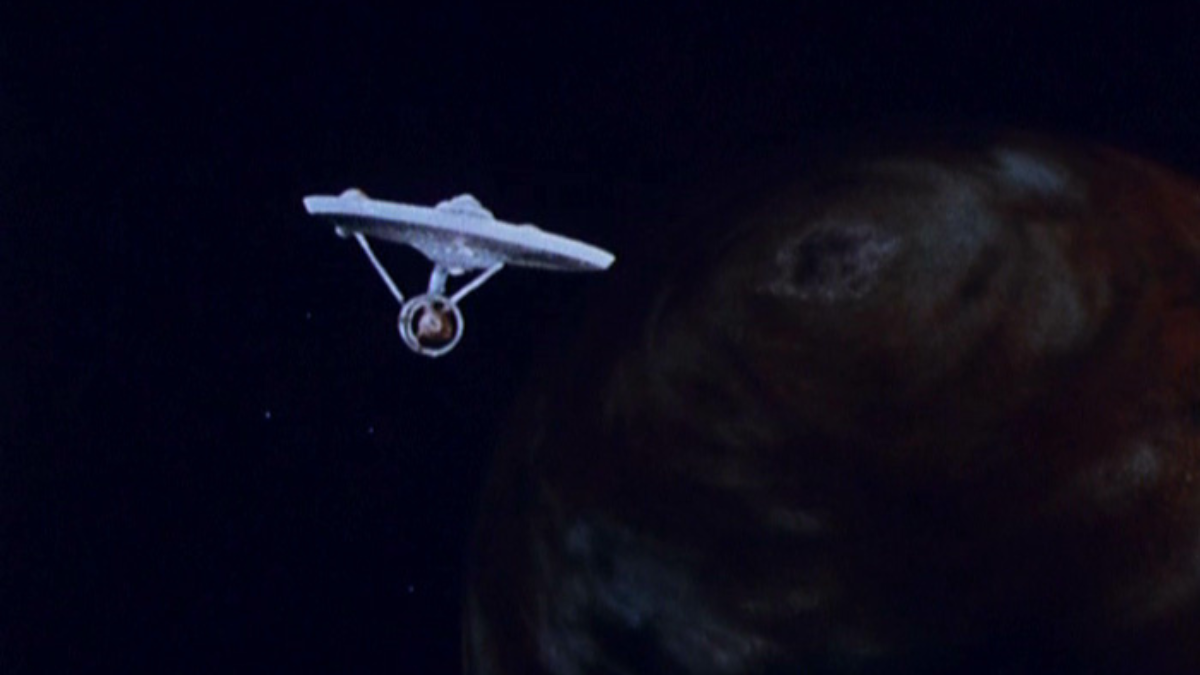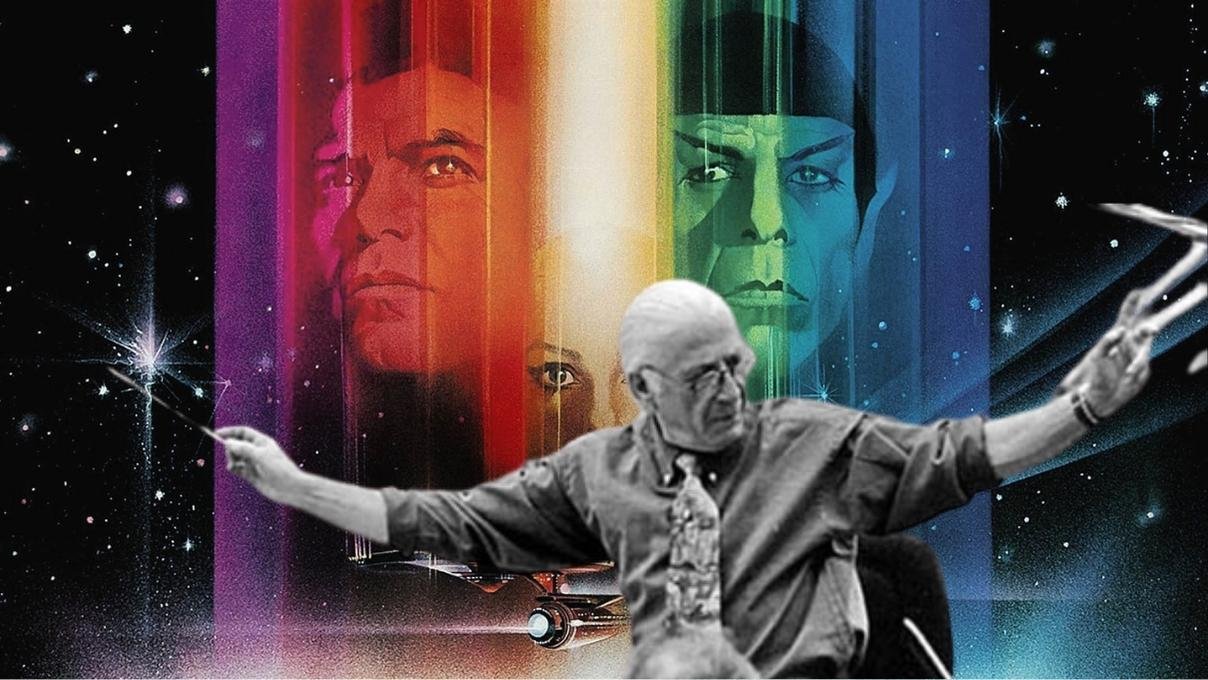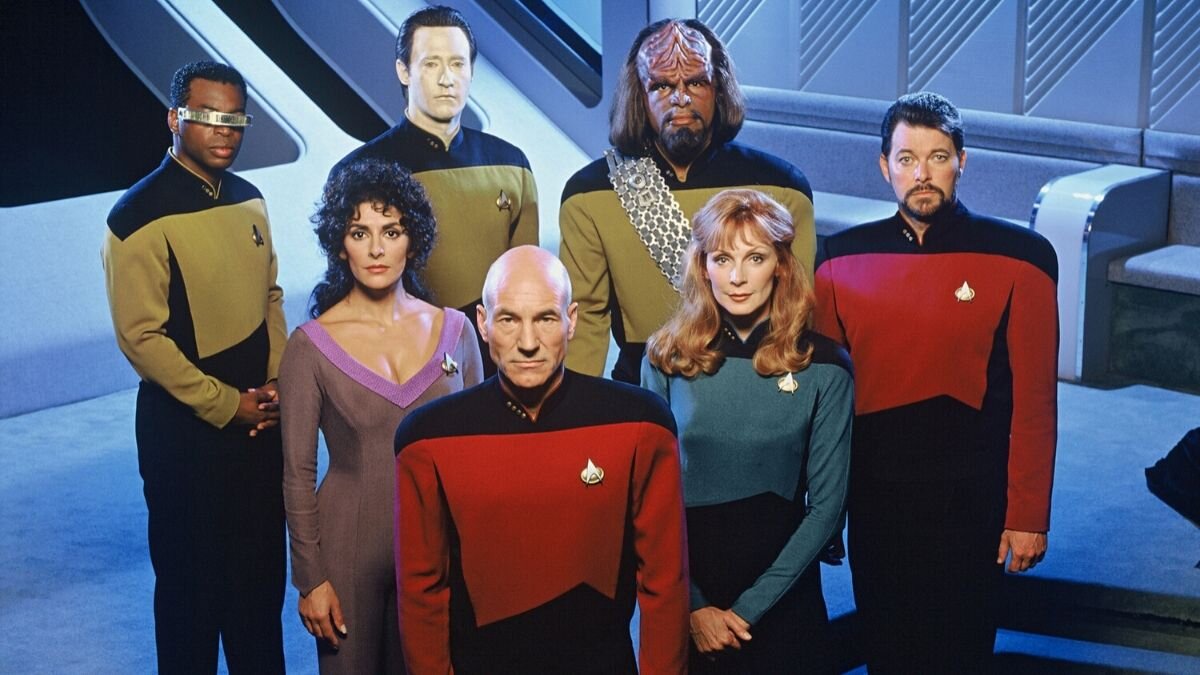Today in Star Trek history: William Shatner records the "saga sell" for the first time

The starship Enterprise orbits a planet in the opening title sequence of STAR TREK
AUGUST 10, 2022 - It was the second day of filming “Dagger of the Mind,” the tenth episode of Star Trek: The Original Series. The cast and crew were putting the finishing touches on the episode’s bridge scenes and preparing to head over to the transporter room when William Shatner received an urgent call. He had to rush over to the Desilu recording studio to record a voiceover…pronto! With the speed of a cheetah, Shatner raced across the lot, and upon his arrival, with nary a hitch in his breath, delivered those famous lines that would open all but one of the episodes of this new series, Star Trek.
At least, that’s how it happened according to some. But, like most tales about larger-than-life people, the truth may be a wee bit different.
The need for a weekly intro of some kind was clear. Star Trek was a new kind of show, science fiction television the like of which had never been produced before. This wasn’t Space Patrol, with Commander Corey and Happy roaming the galaxy, fighting bad guys with zap guns, nor was it The Twilight Zone, an anthology series featuring different characters each week. Trek was conceived to tell serious stories featuring a recognizable cast throughout, only using their weapons once their words had failed.
If their audience were to understand the nature of the Enterprise crew’s mission, they would need to be told. And if the creatives behind the show wanted new viewers to buy into the premise, they, too, would need some explanation. To incorporate the starship’s mission statement into every episode’s dialogue would be cumbersome, to say the least, so they would just have to write an opening narration, what has been termed in the industry a “saga sell.”
Such preambles aren’t unusual (the theme songs to The Brady Bunch and Gilligan’s Island, for instance, are those series’ saga sells) and even in 1966, the idea wasn’t new. Read the words “You're traveling through another dimension - a dimension not only of sight and sound but of mind. A journey into a wondrous land of imagination. Next stop, the Twilight Zone!” and you’ll undoubtedly hear Rod Serling’s voice intoning them at the beginning of every episode.
Instead of Star Trek’s creator Gene Roddenberry reciting the show’s own preamble, however, Roddenberry decided its lead’s voice should bring the audience in. Roddenberry sat down one day in August and penned these words:
“This is the adventure of the United Space Ship Enterprise. Assigned a five-year galaxy patrol, the bold crew of the giant starship explores the excitement of strange new worlds, uncharted civilizations, and exotic people. These are its voyages and its adventures.”
Not bad for a first draft, Gene, but I have notes. And so did Associate Producer John D. F. Black. He kept the core of the monologue, but tightened it up a bit to read:
“Space…the final frontier. This is the story of the U.S.S. Enterprise. Its mission…a five-year patrol to seek out and contact alien life…to explore the infinite frontier of space…where no man has gone before.”
Well, it’s shorter. And there’s no arguing that “space” is the “final frontier.” Also, we’re clear on the fact that the Enterprise is on a five-year mission. This is purportedly because that’s how long a television show had to run in those days to be eligible for syndication (although I’ve had some trouble digging up a confirmation of that “fact.”) The final six words are good, really good, but they weren’t written by Black. The pilot episode of the series, which had been written by Samuel A. Peeples a full year earlier, had been titled “Where No Man Has Gone Before” and “borrowed” for this newly-conceived opening. But John didn’t seem to understand the “rule of three,” the theory that a trio of phrases is more satisfying than two or four. His third “item” needed a little more “oomph.”
The ball was back in Roddenberry’s court, and at last, on August 10, 1966, less than a month before Star Trek would premiere, he sat down to write the most famous saga sell in history, which also happened to be the three most famous sentences he ever penned:
“Space…the final frontier. These are the voyages of the starship Enterprise. Its five-year mission…to explore strange new worlds…to seek out new life and new civilizations…to boldly go where no man has gone before.”
As for Bill Shatner’s heroic sprint across the Desilu lot that hot August day, according to Black, that’s not the way it happened. “We took him in a golf cart. Bill was in good shape. But so was the golf cart.”
At least some of the story is true. Shatner, ever a consummate professional, did, indeed, nail the speech in one take. “Except we didn’t,” Black confessed. “There was a bump in the recording. So Bill did it a second time. And that was the one we used.”
The moral of the story: don’t believe everything you hear. It might only be half true.
If you want to read more about the creators, cast, and crew’s exploits making Star Trek, pick up all three volumes of Marc Cushman’s excellent history of the show, These Are the Voyages. You won’t be sorry.
T is the Managing Editor for Daily Star Trek News and a contributing writer for Sherlock Holmes Magazine and a Shakespeare nerd. He may have been the last professional Stage Manager to work with Leonard Nimoy, has worked Off-Broadway and regionally, and is the union Stage Manager for Legacy Theatre, where he is currently working with Julie Andrews. after which he’ll be working on Richard III at Elm Shakespeare Company.





